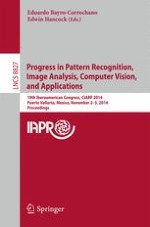This book constitutes the refereed proceedings of the 19th Iberoamerican Congress on Pattern Recognition, CIARP 2014, held in Puerto Vallarta, Jalisco, Mexico, in November 2014. The 115 papers presented were carefully reviewed and selected from 160 submissions. The papers are organized in topical sections on image coding, processing and analysis; segmentation, analysis of shape and texture; analysis of signal, speech and language; document processing and recognition; feature extraction, clustering and classification; pattern recognition and machine learning; neural networks for pattern recognition; computer vision and robot vision; video segmentation and tracking.
